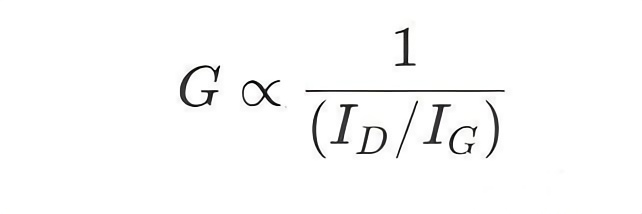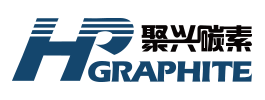【Graphitization Degree】The Invisible Benchmark of Anode Materials – Calculation and Optimization

Graphitization is a key process in the production of anode materials and graphite electrodes, determining the materials' conductivity, heat resistance, and other properties.
【Graphitization Degree】The Invisible Benchmark of Anode Materials – Calculation and Optimization
Among the core components of lithium-ion batteries, anode materials function as "energy storage warehouses," directly determining battery capacity, lifespan, and safety. One of the key indicators for evaluating anode material quality is the graphitization degree. Although this parameter may seem abstract, it is in fact a crucial battlefield in technological competition within the industry.
Whether it is natural graphite, synthetic graphite, or emerging silicon-carbon composite materials, the graphitization degree directly affects the material's electrical conductivity, structural stability, and lithium-ion intercalation efficiency. So, how is the graphitization degree calculated? And how does it influence battery performance? This article will demystify this technical metric from fundamental principles to practical applications.
What Is Graphitization Degree?
The graphitization degree refers to the extent to which carbon atoms form a close-packed hexagonal graphite crystal structure. The closer the lattice parameters of a material are to those of ideal graphite, the higher the graphitization degree, indicating greater structural stability.
For instance, in graphite anodes for lithium-ion batteries, a higher graphitization degree ensures that the structure remains intact during long-term charge-discharge cycles.
Significance of Graphitization Degree
High Graphitization Degree (>90%): Strong electrical conductivity and excellent rate performance, but higher cost.
Low Graphitization Degree (<80%): More structural defects, higher lithium-ion diffusion resistance, but lower cost.
In power batteries, synthetic graphite is the mainstream choice due to its controllable graphitization degree (typically 90%-98%). Meanwhile, natural graphite, with a graphitization degree of around 80%-90%, is preferred in consumer electronics due to its lower cost.
How to Calculate Graphitization Degree? Three Main Methods
Graphitization degree is calculated based on structural characterization data, with the three most commonly used methods being:
1. X-ray Diffraction (XRD) Method
Principle: Measures the diffraction peak position and full width at half maximum (FWHM) of the (002) crystalline plane, then calculates the interlayer spacing (d<sub>002</sub>) and compares it with the ideal graphite value (0.3354 nm).
Formula:

Advantages: Simple operation, direct data interpretation, suitable for batch testing.
Limitations: Cannot distinguish between microcrystalline size and defect types, low sensitivity to non-graphitized carbon.
2. Raman Spectroscopy Method
Principle: Evaluates the defect peak (D-band, ~1350 cm⁻¹) and graphite peak (G-band, ~1580 cm⁻¹) intensity ratio (I<sub>D</sub>/I<sub>G</sub>) to estimate graphitization degree.
Formula:

Advantages: Detects microstructural defects, suitable for nanoscale material analysis.
Limitations: Requires calibration curves for different materials; quantification depends on empirical models.
3. Electrical Resistivity Method
Principle: The higher the graphitization degree, the lower the electrical resistivity. By measuring resistivity under specific compacted density conditions, the graphitization degree can be inferred.
Formula:

(where k is an empirical coefficient, and ρ is resistivity)
Advantages: Fast, low-cost, suitable for real-time monitoring on production lines.
Limitations: Affected by material purity and porosity, requiring regular calibration.
Optimizing Graphitization Degree: Balancing Process and Cost
The key to increasing graphitization degree lies in high-temperature heat treatment (graphitization furnace), but this process is costly. For synthetic graphite, the production process includes:
Petroleum coke/needle coke → Pulverization → Granulation → Graphitization (2800-3000°C) → Coating modification
Among these, the graphitization step accounts for 40%-50% of production costs. The industry is actively exploring ways to reduce costs, including:
Continuous Graphitization Technology: Reduces energy losses in batch furnaces, increasing efficiency by over 30%.
Catalytic Graphitization: Adding iron, nickel, or other catalysts lowers the graphitization temperature to below 2000°C.
Structural Design: Coating and doping reduce surface defects, indirectly improving effective graphitization degree.
Industry Trends: The Race for High Graphitization Degree Materials
With increasing demand for high energy density and fast charging, high graphitization degree anode materials (>95%) are becoming a key research focus:
CATL (Contemporary Amperex Technology Co., Ltd.): Launched "second-generation synthetic graphite" with 98% graphitization degree, improving cycle life by 20%.
BTR (Beiterui New Materials Group Co., Ltd.): Achieved low-cost mass production of 95% graphitization degree graphite using "particle shaping + surface modification" technology.
Silicon-Carbon Anodes: Using graphitized carbon layers as a buffer matrix, enhancing compatibility with high-capacity silicon materials, positioning it as the next-generation anode technology.
Challenges in Scaling High Graphitization Degree Materials
1. Cost Pressure: Graphitization electricity costs account for 30% of total material costs, requiring low-carbon process innovations.
2. Performance Trade-offs: Excessive pursuit of graphitization degree may reduce porosity and hinder lithium-ion diffusion.
Graphitization Degree – The "Metric" of the Anode Industry's Future
Graphitization degree is not only a benchmark for evaluating anode materials, but also a technological roadmap for industry upgrades. From XRD laboratory analysis to resistivity monitoring on production lines, advancements in calculation methods are transitioning this metric from a theoretical parameter to a practical manufacturing guideline.
As continuous graphitization and catalytic processes mature, cost-effective high-graphitization materials are expected to dominate the market, injecting new momentum into the lithium battery industry.
Feel free to contact us anytime for more information about the Anode Material market. Our team is dedicated to providing you with in-depth insights and customized assistance based on your needs. Whether you have questions about product specifications, market trends, or pricing, we are here to help.
No related results found








0 Replies